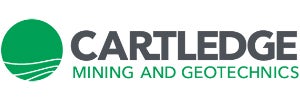Many mine operators across Australia still consider geotechnical inspections as an obstruction to production because short-term geotechnical controls are often onerous and potentially lead to shutdown of active circuits, impacting on production targets.
Whereas in reality, expert geotechnical inspections are essential to ensuring mining operations are safe and have the potential to save operators millions of dollars in the long run.
Early identification of geotechnical hazards and development of mitigatory designs during the planning process, leads to better financial risk management.
Geological problems are the principal cause of pit wall failures in most mines. The average failure remediation cost is about $5 million dollars in coal mines and can range up to $40 million if a mine is forced to shut. Total loss can be in the hundreds of millions of dollars.
Appropriate geotechnical site investigations and robust geotechnical designs increase geotechnical confidence, reduce the risk of costly wall failures and subsequent delays in the mine schedule, and improve safety for personnel.
Product sales are often locked into the mining schedule 12 months in advance, meaning any delays in the mine schedule can result in significant financial impairments.
Therefore, good mine designs should identify latent geotechnical hazards and provide mitigating designs at least 12 months in advance. To do this, proactive geotechnical design must be integrated into the mine design process through the mine design lifecycle, from long term, through to short-term and review and reconciliation.
This can be broken down into design phases that are commensurate with product sales, such as those shown below:
- Long-term design period – 5 years to LOM
- Mid-term design period – 2-5 years
- Short-range forecast – 4 months – 2 years
- Short-term design period – 0-4 months
- Strip Review and Reconciliation – 0 months to -4 weeks
Each design phase is intended to increase the level-of-detail:
- Long term – High level review of geological structure and potential hazards for input to life-of-mine exploration programs.
- Mid-term period – Identify potential significant geotechnical hazards and define scope of work to de-risk (e.g. additional studies for alternative designs, exploration to improve fault interpretation) prior to locking in product sales in SRF window.
- SRF – Develop detailed geotechnical designs and hazard plans to provide to mid- and short-term planning engineers.
- Short term – Validate SRF design and, geology and geotechnical models against observed pit conditions to produce pit shell / highwall plans.
- Review and reconciliation – Review pit performance against expected ground conditions and provide feedback to the Technical Services team and input to SRF design process.
The establishment of a staged, robust geotechnical design process can significantly reduce the risk of financial shocks due to unexpected delays caused by geotechnical hazards.
Smart mine operators who weigh up the cost of good geotechnical design against the potential losses of a failure soon decide what is the smart choice.
This is particularly the case when an expert analysis of the vulnerability of a mine could cost as little as a few thousand dollars.
A good example of what can be achieved is the case of Middlemount Coal Mine, which engaged Cartledge Mining and Geotechnics to provide geotechnical support after experiencing several significant highwall failures in areas where they were not historically a problem.
The mine was approaching the regional scale Jellinbah fault and expecting geological structures would become more prevalent during subsequent strips.
After meeting with company officials and discussing their needs, it was decided we would supply mid-term design, pitwall mapping, regular site inspections and ad-hoc geotechnical support.
We presented Middlemount with the abovementioned proposed timeline for a staged approach to geotechnical mine design.
We used software that utilises photogrammetry techniques to capture orientation data for linear geological structures and geotechnical data for use in geological modelling and geotechnical assessments.
This proactive approach paid dividends with a reduction in pit wall failures and the number of mining-induced hazards steadily declining.
The future looks bright for Middlemount because they were willing to bring in experts to not only solve existing problems, but also ensure future problems could be avoided.
Based on what I’m seeing in the sector, this proactive approach is going to become more of a common concept as more and more mine operators see the value in expert geotechnical inspections as a way to ensure mining operations are safe, while potentially starving off millions in loss in the long run.

